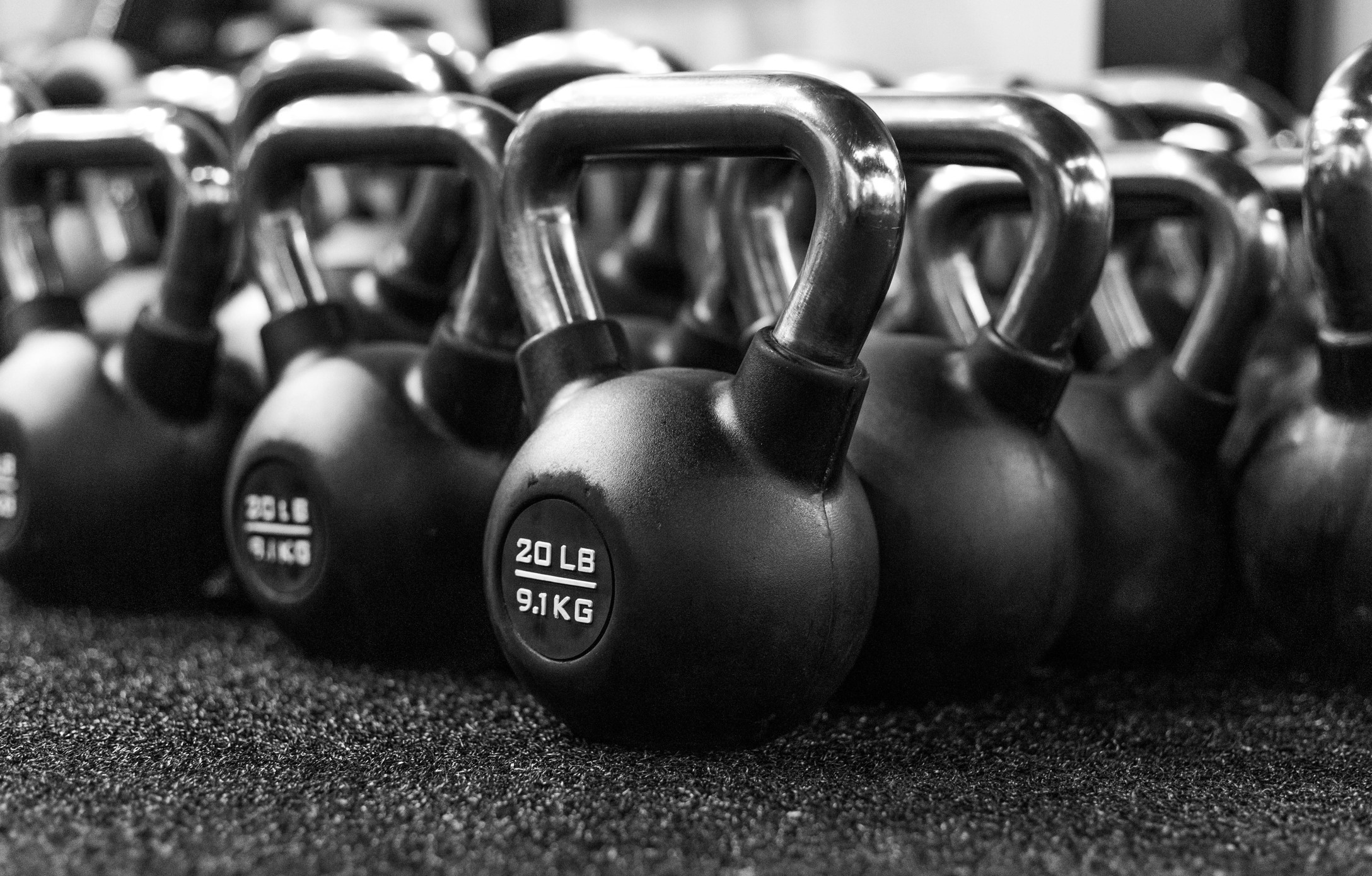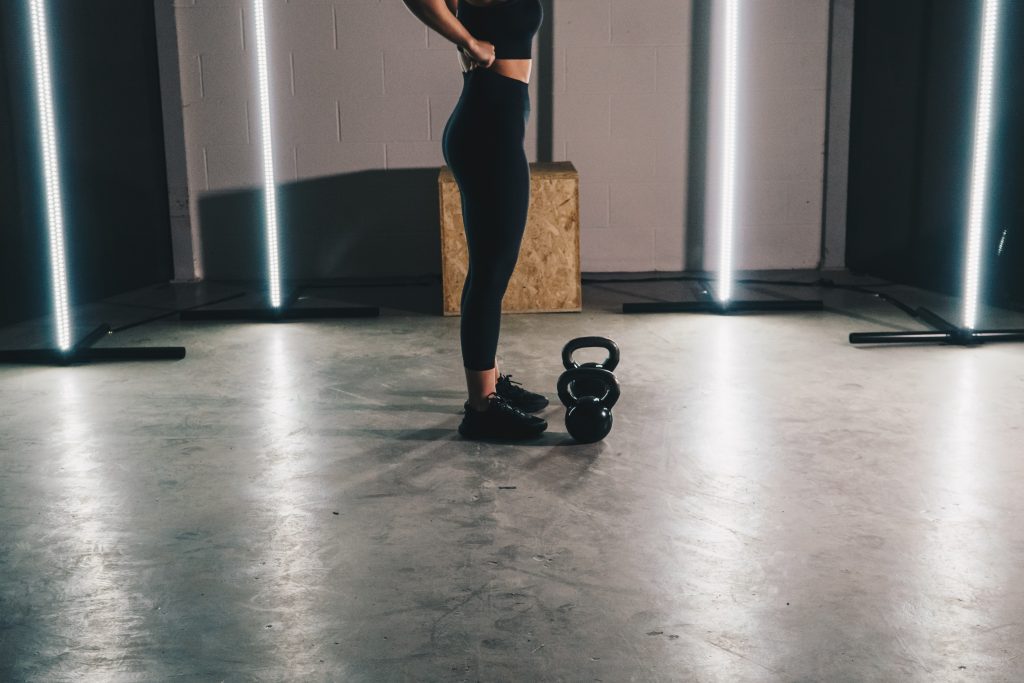
Picking the right kettlebell weights for your first-ever workout can be hard and intimidating. There are a lot of factors that you need to consider, especially if you’re just a complete beginner in weight training.
But don’t worry, in this piece, we’re going to help you decide what kettlebell weight you should start with so you can kick off your training the right way.
But first, here’s a refresher about the crowd-favourite gym equipment.
A Quick Intro to Kettlebells
Kettlebells weren’t used as fitness tools originally. In 18th-century Russia, these mini cannon balls called “girya” were used as counterweights to measure the grain and other crops.
As a pastime, farmers arranged mini weightlifting contests to see who can carry the heaviest ones. Eventually, these kettlebells found their way into the hands of the Soviet Army and were used as part of their military training.
In the 1940s, they became available in the United States, and from there, only grew in popularity. Nowadays, kettlebells are available in almost all gyms and fitness stores.

Parts of a Kettlebell
Kettlebells have 4 main parts that make them an oddly unique and effective gym equipment:
The bell – it’s the round cannonball-shaped weight that also serves as the centre of mass of the kettlebell. It has a flat base that makes it stay put on the ground, unlike barbells that roll on the floor.
The Handle – as the name suggests, this is where you grip the kettlebell most of the time.
The horns – this part connects the handle and bell. In some kettlebell workouts, you may need to grip on this part, too.
The window – this is the gap or hole that is formed by the three connecting parts. This gap allows flexibility around the handle, so you can change grips as you shift from one workout to another.
3 Things to Consider When Choosing a Kettlebell Weight and Size
Kettlebells are available in many weight levels and sizes that you can choose from. Before hitting the gym and lifting whatever kettlebell size you fancy or investing in your own kettlebells for your home gym, make sure to assess yourself first.
Below are some of the factors that you should take into consideration before even touching a kettlebell.
1. Weightlifting Experience
One of the rookie mistakes that most beginners do is buying or trying gym equipment and tools that are way beyond their level.
If you are new to weight training or working out in general, start small and slow. Don’t worry, there’s nothing wrong with that. What’s wrong is getting injuries because of overworking your body.
Always try beginner stuff at first, then work your way up to heavier weights and more intense routines – slow and steady definitely wins the race here.
2. Age and Fitness Level
Depending on how old or how fit you are, the recommended kettlebell weight and size may also vary. But generally speaking, smaller and lighter weights are advised for teens and seniors who want to get into kettlebell training.
3. Types of Kettlebell Workout
Your fitness goals will determine which type of kettlebell workout is right for you and how heavy you should be lifting for each routine.
In kettlebell training, there are 2 main types of workout:
Kettlebell Grinds – this workout is called grinds because of the consistency and dedication that it requires. It involves several routines like a bent press, overhead press, windmills, and others.
It’s perfect for beginners and experts alike who are looking to build muscle and strength.
Kettlebell Ballistics – as the name suggests, this workout is all about explosiveness. Which is why it involves 2 main movements: jumping and throwing.
These movements, with the addition of the weight of the kettlebells, make it a great workout for those who want to burn fat and lose weight.
Beginner’s Guide to Choosing the Right Kettlebell
Kettlebells come in many different weights and sizes. They can go from a kilogram to a massive 48kg! There’s certainly one for every level.
So, what kettlebell weight should you get?
There is no one size fits all when it comes to kettlebell weights for beginners, however, there are average weights that you can use as a guide when starting kettlebell training.
You can try these weights out and see what suits you best as a beginner.
Starter Kettlebell Weights for Men
An average, inactive man can usually comfortably lift 12kg of kettlebells. However, there’s more to kettlebell training than just lifting. Below are the recommended weights for men.
8 kg – best for inactive men (18 years and above) who are out of shape and literally just started exercising
8 kg to 12 kg – best weights for the average active man
12 kg to 20 kg – best options for athletic men who are into other sports like running or cycling but haven’t really done much weight training
These weights may vary from time to time as you shift from more controlled, grinding workouts like windmills and Turkish get-ups.
As you get more reps consistently, you can work your way up to heavier kettlebells.

Starter Kettlebell Weights for Women
For the average woman, the recommended kettlebell weights are a bit lighter. However, if you feel that you can go a little higher, you are always free to test your limits.
4 kg to 6 kg – recommended weights for out-of-shape and inactive women
6 kg to 8 kg – best for the average active woman
8 kg to 12 kg – if you are an athletic woman, you may be able to go straight to these weights
Many women underestimate how strong they are and end up choosing kettlebells that are too light. So, if you’re planning to buy one, aside from following the guide above, we suggest that you try hitting the gym first and do kettlebell training for a while and see which weights you are the most comfortable using.
Make sure to consider the feel of the handle on your hands. This applies to men, too. You don’t want handles that are too thick or too thin for your hands because it will affect your grip on the kettlebell.
The better grip you have, the more efficient you’ll be on your kettlebell workouts.
Kettlebell Weight for Kids
If you’ve been hesitant to let your kids join your kettlebell training, don’t worry it’s okay. According to the American Academy of Pediatrics, letting kids do simple kettlebell routines is completely safe and has potential health benefits for your child.
As per the weight, it will depend on the age and fitness level:
5 to 8 years – 2 kg to 4kg of weight
9 to 11 years – 4 kg to 6 kg of kettlebells
12 to 16 years – 5 kg to 10 kg kettlebells
Make sure to limit their exercises to very simple routines like goblet squats and deadlifts. Avoid ballistic workouts as much as possible.
Kettlebell Weight for Seniors
It’s never too late for your granny and grandpops to get into kettlebell training. This exercise can help build their strength and balance and improve their cardio as well.
If you’re a senior looking to get fit, these are your best kettlebell weight options:
10 kg to 12 kg – ideal for average male senior
6 kg to 8 kg – ideal for the average female senior
Keep in mind that you’re less likely to be trying to build extra muscles. So, make sure to focus on kettlebell exercises that work on your cardio.
Adjustable Kettlebell vs Standard Single-Cast Kettlebell
Since you’re new in the kettlebell community, you’re probably surprised that an adjustable kettlebell even exists. Here’s a brief explainer of these two types:
Single-cast Kettlebells – these are the normal mini cannonballs that you see in gyms, sports stores, and other fitness-related places.
They are made of either cast iron or steel which are both durable materials, with the latter being the more durable and preferred one.
Adjustable Kettlebells – on the other hand, as the name suggests, they are adjustable in weight.
Unlike standard kettlebells, they are not solid. Instead, they are composed of a frame, the weights, and a locking mechanism that secures the weights in place.
The locking mechanism allows you to remove and add the weights back so you can use different weight levels without having to buy multiple kettlebells.
Now, which one should you buy?
Well, there are pros and cons on both sides. Here are some that you may find on both kettlebells.
Standard Kettlebells
Pros
- More durable than the adjustable type
- Offers a bigger range of weights
- It’s the official type of kettlebell used in competitions
Cons
- Much more expensive
- Takes up more space if you don’t have a dedicated home gym
Adjustable Kettlebells
Pros
- Less expensive
- Compact and space-saving
Cons
- Changing the weights regularly can be pretty annoying
- Less durable the single-cast types
- Very limited range of weights
Verdict
If you have a very tight budget and a tight space in your home to set up a whole rack of kettlebells, you’re probably better off with one or two adjustable kettlebells. But if space and money are not a problem, standard kettlebells are a great option.
Start Your Kettlebell Training at Rec Xpress
If you’re a complete newbie in kettlebell training, it’s better to kick it off right—with the right weights, routines, and reps. These are all the things that you get when you join Rec Xpress.
Our trainers can make sure that you’re on the right track to your fitness goals. We also offer low-cost and easy signup processes so you can start immediately.
Our gyms are located in Melbourne’s South East suburbs and open 24/7, so it couldn’t be easier to perfect your kettlebell skills today.
